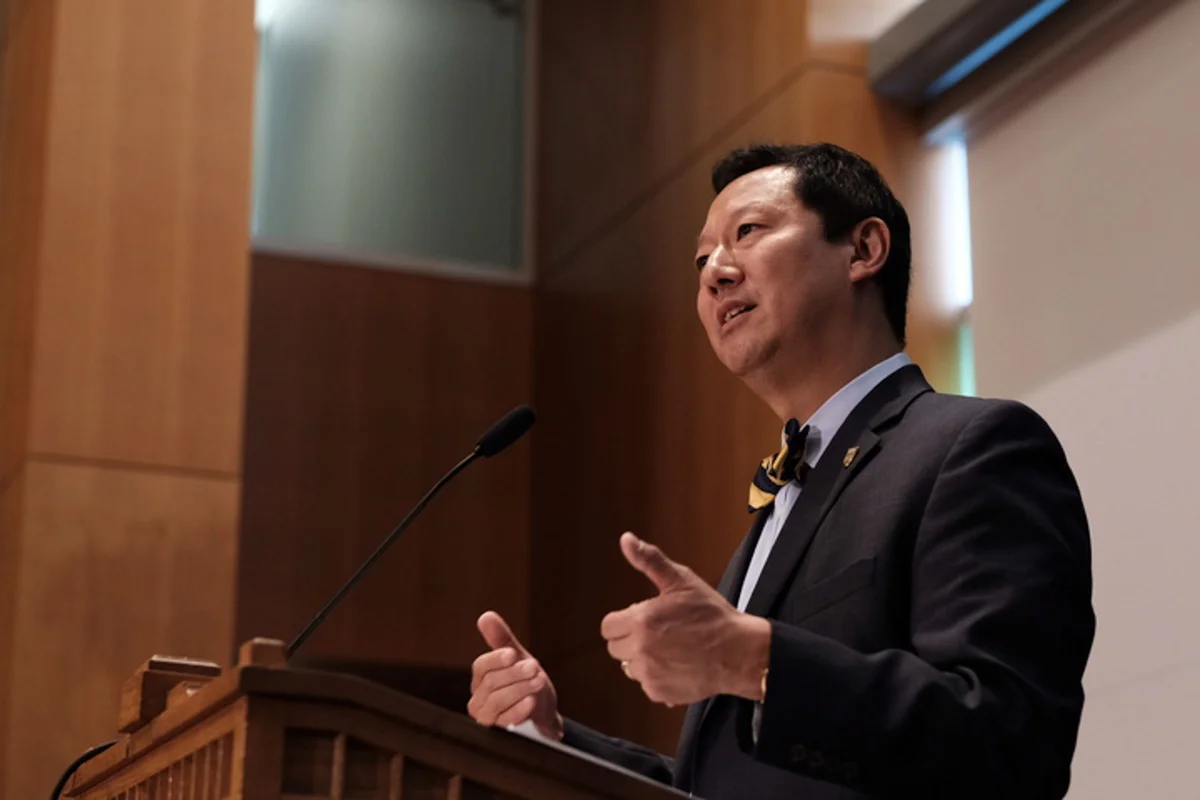
Santa Ono will be installed as the 15th president of UBC on November 22. His official installation comes just over four months after Ono was tapped to be the university’s next president, largely due to the lengthy process of coordinating visits from notable guests, including the president of the University of Toronto.
For those past few months, he has been documenting his days as president on his Instagram and Twitter accounts, meeting the royals and networking with Bill Gates.
For Ono, the most unexpected part of the job has been “the brilliance of the faculty and students and staff of this university,” and he pointed to the energy of the people he interacts with as the best aspect of his role at UBC.
“The commitment by people from all over — from government roles, to alumni, to our faculty staff — the commitment to elevating the university has been remarkable. But the highlight, easily, has been participating in Imagine Day and Create. I’ve never felt more energy than at those events and I’ve been in stadiums with 40,000 students,” said Ono.
The main installation ceremony will take place at 10 a.m. at the Chan Centre, with additional events running throughout the day. Most events are open to all members of the UBC community, including a Celebration Concert in the evening which is scheduled to feature students and faculty from the school of music, alongside musical guests.
In the afternoon, Ono will host a forum entitled “Celebrating Discovery: Four Visionary Thinkers” in the Old Auditorium, for which he will moderate audience questions. The forum features talks from four leading scholars in robotics, brain health, mathematics and music.
One of the speakers will be Dr. Elizabeth Croft, professor of mechanical engineering and director of the Collaborative Advanced Robotics and Intelligent Systems Laboratory (CARIS) at UBC.
Her talk on “discovering what it means not to be human” will focus on human-robot interactions and the conversations about ethics that must accompany those interactions. According to Croft, thinking about non-human beings, such as robots, can be a useful way to think about what it means to be a human being.
“When we start to look at robotics and robotic interactions with people, we start to ask questions about ourselves and about how we interact with others,” she said.
At this point in the development of robots, Croft said that we need to start asking questions about the responsibility and autonomy of the robots that will increasingly frequent our lives.
“In a sense, we need our thinking about our robot ethics and rules of engagement to catch up with the technology so that we aren’t caught with the unintended consequences of creating a technology that over-leaps our ability to interact with that technology.”
As Canada Research Chair in neurobiology of motor learning and professor in the department of physical therapy, Lara Boyd will be speaking on her work in neuroscience and brain plasticity during her talk.
“If you are using your brain and you’re engaged and you’re really working on something, you are shaping your brain in one direction. If you are depressed or sick, or inactive physically or mentally, you are shaping your brain in another direction. That has led us to be extremely interested in behaviors that shape what we call ‘positive plasticity’ — bringing the brain towards a healthy state and an engaged state,” said Boyd.
She highlights the importance of recognizing individual variance in brain plasticity, especially in regard to systems of education.
“As an educational institution, I think we need to be acutely aware of that when we are interacting with our undergraduate students, our graduate students and our fellows. How are we able to optimize and maximize their potential by understanding individuality and their patterns of brain plasticity?”
For more information on the installation and to reserve your tickets, visit the website of the Office of the President.

